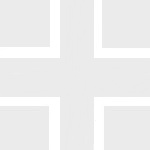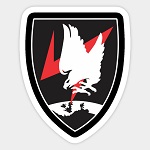Warbirds WB0006 German Heinkel He 219A-0 "Uhu" Night Fighter - Manfred Meurer, Nachtjagdgeschwader 1, Germany, 1944 (1:72 Scale)
"Guns before butter. Guns will make us powerful; butter will only make us fat."
- Reichsmarschall Hermann Goering, Head of the German Luftwaffe
 The He 219 has been described as the best night fighter operated by the Luftwaffe during World War II. In fact, the "Uhu" (Owl) may have been the best night fighter of the war. Only the American Northrop P-61 "Black Widow" shares the He 219's unique status of being designed for night operation. The He 219 was fast, maneuverable, and carried devastating firepower. It was the only piston-engined Luftwaffe night fighter which could meet the British De Havilland Mosquito on equal terms. Advanced features included remote-controlled gun turrets, a pressurized cabin, the first steerable nosewheel on an operational German aircraft, and the world's first ejection seats on an operational aircraft.
The He 219 has been described as the best night fighter operated by the Luftwaffe during World War II. In fact, the "Uhu" (Owl) may have been the best night fighter of the war. Only the American Northrop P-61 "Black Widow" shares the He 219's unique status of being designed for night operation. The He 219 was fast, maneuverable, and carried devastating firepower. It was the only piston-engined Luftwaffe night fighter which could meet the British De Havilland Mosquito on equal terms. Advanced features included remote-controlled gun turrets, a pressurized cabin, the first steerable nosewheel on an operational German aircraft, and the world's first ejection seats on an operational aircraft.
Due to political rivalries between Josef Kammhuber, commander of the German night fighter forces, Ernst Heinkel, the constructor and Erhard Milch, responsible for aircraft construction in the Reichsluftfahrtministerium (RLM - the German Aviation Ministry), the development and production of the aircraft was tortuous. Furthermore, the aircraft was complicated and expensive to construct, a factor that further limited the number of planes produced.
When Robert Lusser returned to Heinkel from Messerschmitt, he began work on a new high speed bomber project called P.1055. This was an advanced design with a pressurized cockpit, twin ejection seats (the first to be planned for use in any combat aircraft), nose wheel landing gear and remote control defensive guns similar to those used by the Messerschmitt Me 210. Power was to be provided by two DB 610 "coupled" engines producing 2,950 hp each, delivering excellent performance with a top speed of approximately 750 km/h (465 mph) and a 4,000 km range with a 2,000 kg bomb load.
The RLM rejected the design in August 1940 as too complex and risky. Lusser quickly offered four versions of the plane with various wingspans and engines in order to balance the performance and risk. At the same time, he offered the P.1056 dedicated nightfighter with four 20 mm cannons in the wings and fuselage. The RLM rejected all of these on the same grounds in 1941. Heinkel was furious and fired Lusser on the spot.
About the same time as Lusser was designing the P.1055, Kammhuber had started looking for a dedicated aircraft for his rapidly growing night fighter force. Heinkel quickly re-designed P.1055 for this role as the P.1060. This design was similar in layout but somewhat smaller and powered by the smaller and simpler DB 603 engine. This engine wasn't known for its altitude performance, which was a problem for this design with its short wings, but Daimler offered a new "G" version that addressed that issue. Heinkel was sure he had a winner and sent the design off to the RLM in January 1942 while he funded the first prototype out-of-pocket. Nevertheless the RLM again rejected the plane in favour of new Junkers Ju 88 and Messerschmitt Me 210 based designs.
Construction of the prototype started in February but suffered a serious setback in March, when Daimler said that the DB603G would not be ready in time. Instead they would deliver a 603A with a new gear ratio to the props, with the new designation 603C. Even these took until August to arrive, thus the prototype did not fly until November 6th, 1942. When Kammhuber saw the prototype on the 19th he was so impressed he immediately ordered it into production over Milch's objections. Milch, who had rejected the plane in January, was enraged.
Stability problems were noted but Heinkel overcame the problem by offering a cash prize to the engineers who could fix the problem. Further changes were made to the armament; the rear defensive guns - which were found to be ineffective - were removed. The forward firing armament was increased to two 20 mm guns in the wing roots and four more guns or cannons mounted in the ventral tray. Production prototypes were then ordered as the He 219 A-0 (V-series planes) and quickly progressed to the point where V7, 8 and 9 were handed over to operational units in June '43 for testing.
Pictured here is a 1:72 scale replica of a German Heinkel He 219A-0 "Uhu" night fighter was piloted by Manfred Meurer, who was attached to Nachtjagdgeschwader 1, then deployed to Germany during 1944.
Now in stock!
Dimensions:
Wingspan: 11-inches
Length: 8-1/2-inches
Release Date: June 2021
 Historical Account: "Meurer" - Manfred Meurer (September 8th, 1919 - January 22nd, 1944) was a German Luftwaffe military aviator during World War II, a night fighter ace credited with 65 aerial victories claimed in 130 combat missions making him the fifth most successful night fighter pilot in the history of aerial warfare. All of his victories were claimed over the Western Front in Defense of the Reich missions against the Royal Air Force's (RAF) Bomber Command.
Historical Account: "Meurer" - Manfred Meurer (September 8th, 1919 - January 22nd, 1944) was a German Luftwaffe military aviator during World War II, a night fighter ace credited with 65 aerial victories claimed in 130 combat missions making him the fifth most successful night fighter pilot in the history of aerial warfare. All of his victories were claimed over the Western Front in Defense of the Reich missions against the Royal Air Force's (RAF) Bomber Command.
Born in Hamburg, Meurer grew up in the Weimar Republic and Nazi Germany. Following graduation from school and the compulsory Reichsarbeitsdienst (Reich Labor Service), he joined the military service in 1938, at first with an anti aircraft artillery regiment before being trained as a pilot. Meurer then served with Zerstorergeschwader 76 (ZG 76-76th Destroyer Wing), flying a Messerschmitt Bf 110 heavy fighter. In October 1941, he transferred to Nachtjagdgeschwader 1 (NJG 1-1st Night Fighter Wing) where he became a night fighter pilot and claimed his first aerial victory on the night of March 26th-27th, 1942. Meurer was appointed squadron leader of 3. Staffel (3rd squadron) of NJG 1 in January 1943. Following his 50th aerial victory, he was awarded the Knight's Cross of the Iron Cross with Oak Leaves on August 2nd, 1943. The Knight's Cross (German: Ritterkreuz), and its variants were the highest awards in the military and paramilitary forces of Nazi Germany during World War II. On August 5th, 1943, he was appointed group commander of II. Gruppe of Nachtjagdgeschwader 5 (NJG 5-5th Night Fighter Wing). Meurer and his crew were killed in action in a mid-air collision with a RAF bomber on the night of January 21st-22nd, 1944.


